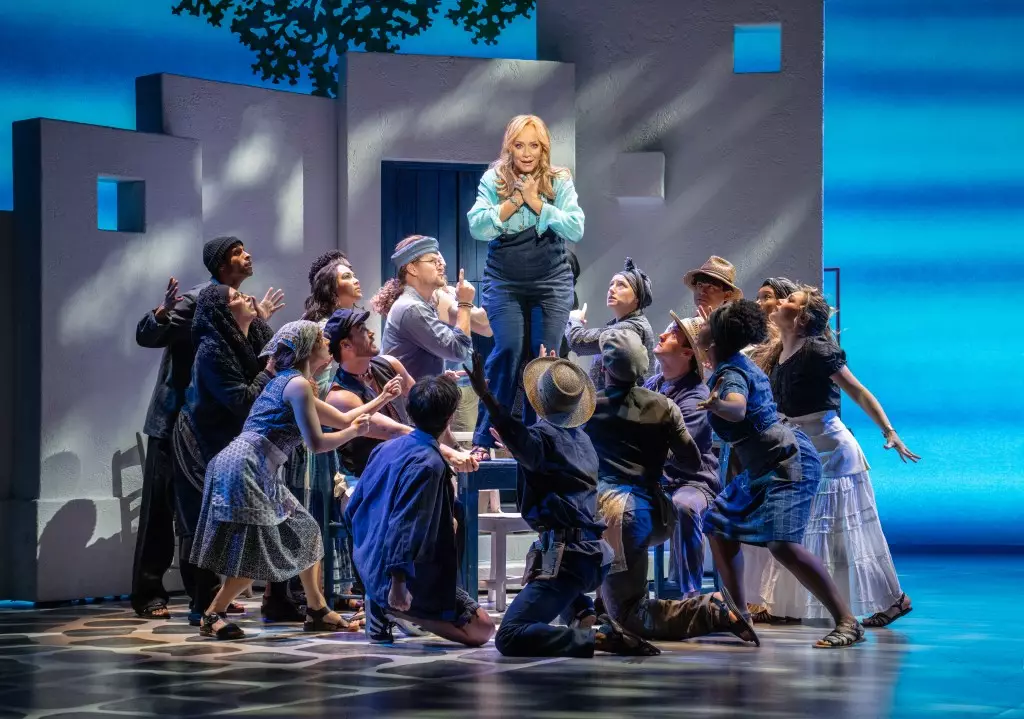Amidst a sea of declining box office numbers and a general climate of entertainment fatigue, Broadway’s recent successes, particularly with the revival of *Mamma Mia!*, reveal an intriguing resilience. Critics often dismiss Broadway as passé or overly dependent on nostalgia, yet the sell-out preview at the Winter Garden Theatre underscores a deeper societal desire for shared communal experiences and live entertainment. The fact that a show like *Mamma Mia!*, which has a storied history and a well-worn formula, can still draw full houses challenges notions that cultural venues catering to popular tastes are dead or doomed. It suggests that, unlike film or streaming options, Broadway’s appeal remains rooted in its unique immediacy and shared social experience. Its ability to bounce back with a hit underlines not just economic endurance but also a broader cultural relevance that critics tend to overlook or dismiss too quickly.
Economic Realities and the Audience’s Loyalty
Analyzing the financial data reveals a nuanced picture. Despite the overall downturn in weekly grosses, productions like *Hamilton*, *Wicked*, and *The Lion King* continue to pull in eye-watering sums—sometimes more than $2 million a week. These figures highlight a persistent loyalty among a core demographic willing to pay premium prices for high-quality productions, parodying critics who often portray Broadway as a luxury only for the elite. The presence of price tags like $231.84 for a single ticket in *Just In Time* signals an understanding: Broadway is an investment, a cultural commitment that audiences value enough to pay for. It’s a blunt rebuke to claims of Broadway’s declining relevance—people are still willing to prioritize live performances enough to spend hundreds per seat. This enduring spending pattern underscores a critical societal dynamic: while mass entertainment might be shifting, a dedicated segment of Americans and tourists remain committed to experiencing Broadway as a cultural staple, not just a luxury.
Limitations and Challenges: The Reality Check
However, beneath these highlights lies a sobering reality. Many shows are struggling, with some filling only half or two-thirds of their seats, and the total gross dipping by around 5%. The drop in attendance and revenue signals an underlying challenge: not all productions are equally resilient. The fact that many—like *Call Me Izzy* and *Gypsy*—are barely getting half-filled audiences suggests a divide between blockbuster hits and flops, a phenomenon that prompts critical questions about broader cultural trends. Are these struggles indicative of audience fatigue, or do they point to broader shifts in entertainment preferences? As the hot summer months wear on, Broadway appears to suffer from seasonal fluctuations and heightened competition from other entertainment venues. This susceptibility to seasonal dips and the uneven performance of shows exposes an industry that, despite its resilience, remains vulnerable to external pressures and changing consumer habits.
Broadway’s Cultural Significance in a Changing World
Despite the challenges, Broadway’s overall revenue up 10% compared to last year and a 7% increase in attendance highlight that the industry has not lost its appeal. Critics who dismiss Broadway as an outdated relic fail to recognize how it adapts—through revivals, new hits, and the sheer variety of offerings like *The Book of Mormon*, *MJ*, and *Death Becomes Her*. The fact that ticket prices remain high reflects a market that still perceives Broadway as a premium cultural experience, not merely entertainment but a symbol of artistic craftsmanship and communal storytelling. This phenomenon suggests that the critics’ pessimism often underestimates the cultural mechanisms at play: Broadway’s deep-rooted ability to reflect societal values, challenge perceptions, and provide escapism makes it a vital component of America’s cultural landscape, rather than a nostalgic detour. The sustained financial success year after year indicates that Broadway’s role in shaping cultural discourse remains relevant, even in an era dominated by short-form content and digital consumption.
The Future of Broadway: An Industry on the Brink or On the Rise?
Critically assessing Broadway’s trajectory reveals an industry that has weathered economic downturns, cultural shifts, and global challenges—yet continues to thrive in its own way. Its ongoing ability to draw sell-out crowds, maintain high-ticket prices, and generate significant revenue demonstrates a resilience grounded in the industry’s capacity for reinvention and the enduring demand for live, communal entertainment. Far from being an anachronism, Broadway embodies a unique intersection of tradition and innovation, adapting to modern tastes even as it preserves its core identity. While it undoubtedly faces threats—economic pressures, competition from streaming, and changing demographics—the industry’s current performance suggests it remains a vital cultural institution. Its importance extends beyond mere box office figures; it continues to serve as a reflection of societal values, a catalyst for civic engagement, and a testament to the unyielding human desire for storytelling that is experienced collectively and in real time.

